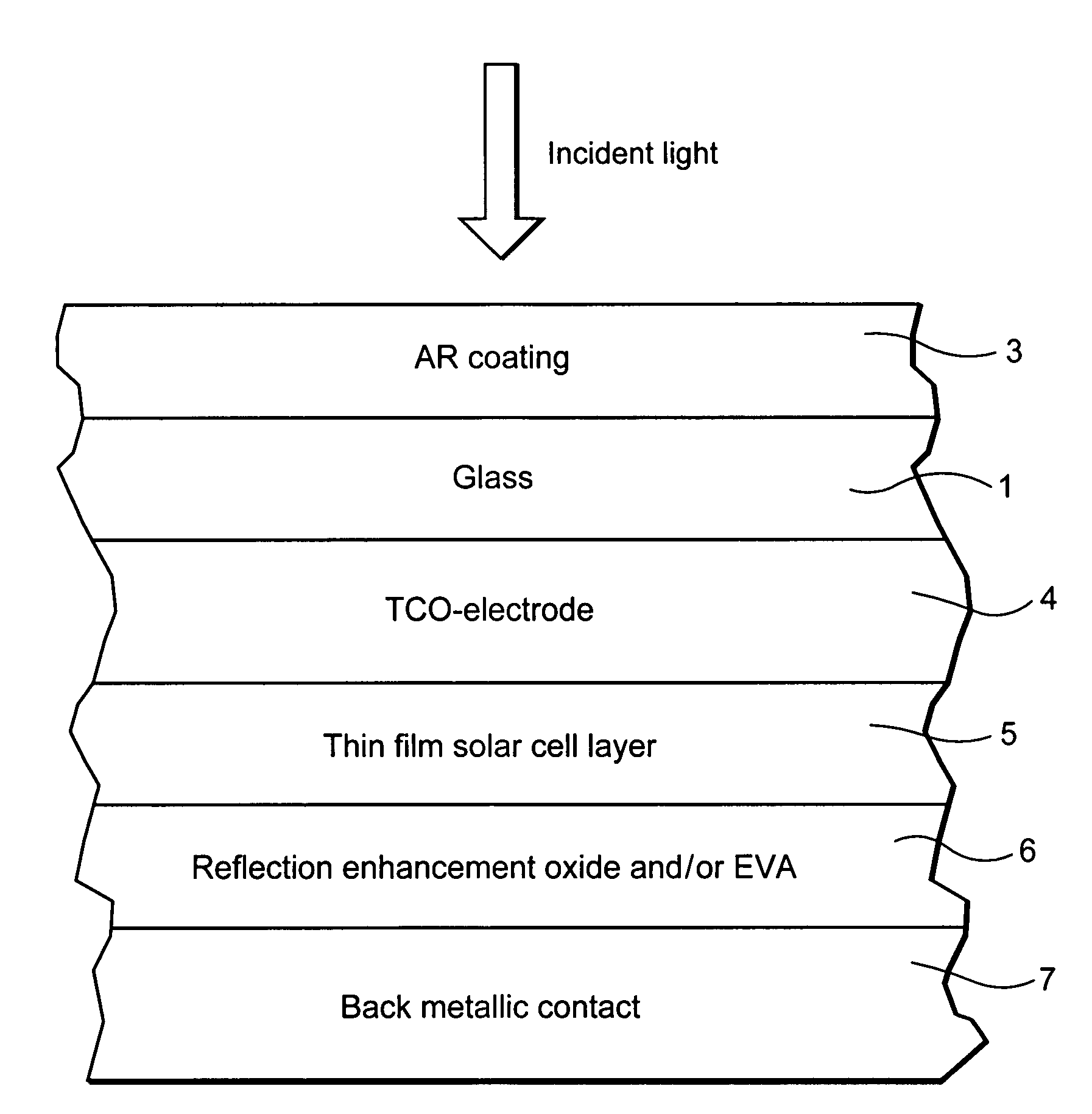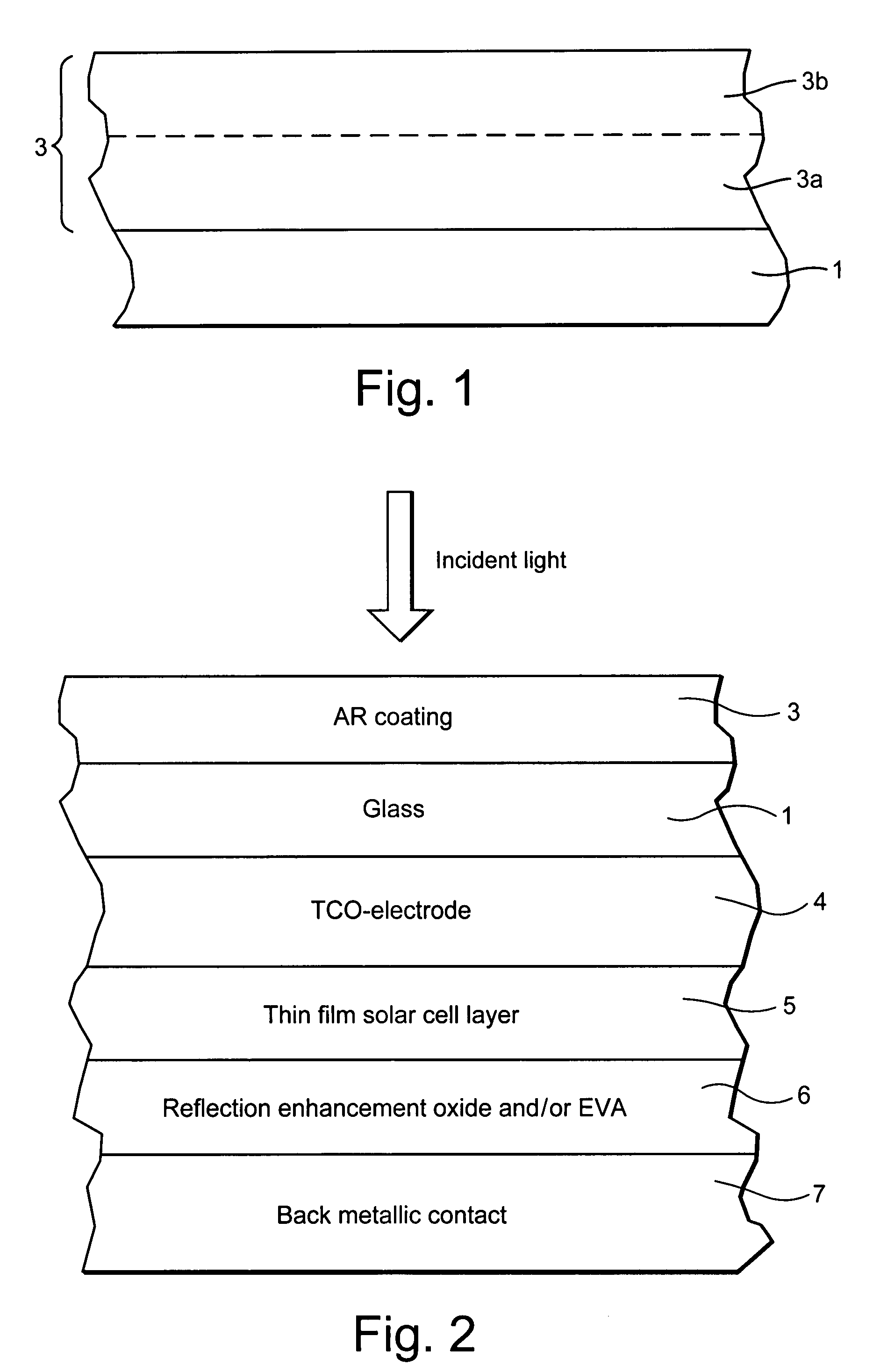Method of making a photovoltaic device with antireflective coating
a photovoltaic device and anti-reflective technology, applied in the field of making a photovoltaic device with anti-reflective coating, can solve the problems of low scratch resistance, ineffective scratch resistance of ar coatings made solely from porous silica, etc., to improve the efficiency and/or power of the photovoltaic device, improve the effect of transmission and/or power
- Summary
- Abstract
- Description
- Claims
- Application Information
AI Technical Summary
Benefits of technology
Problems solved by technology
Method used
Image
Examples
example # 1
EXAMPLE #1
[0060]The silica coating was fabricated using spin coating method with 1000 rpm for 18 secs. The coating was heat treated in furnace at 625° C. for three and a half minutes. The critical scratch load of this coating is 30 mN as shown in the table 2.
example # 2
EXAMPLE #2
[0061]The example #2 is same as example #1 except 3Al2O3:2SiO2 sol and silica sol were taken in 2:98 percent weight ratio respectively and mixed for 30 mins at room temperature prior to spin coating. The critical scratch load of this coating is 50 mN as shown in the table 2.
example # 3
EXAMPLE #3
[0062]The example #3 is same as example #2 except the Al2O3:SiO2 sol and silica sol were taken in 2:98 percent weight ratio respectively. The critical scratch load of this coating is 70 mN as shown in the table 2.
PUM
| Property | Measurement | Unit |
|---|---|---|
| temperature | aaaaa | aaaaa |
| temperature | aaaaa | aaaaa |
| temperature | aaaaa | aaaaa |
Abstract
Description
Claims
Application Information
 Login to View More
Login to View More - R&D
- Intellectual Property
- Life Sciences
- Materials
- Tech Scout
- Unparalleled Data Quality
- Higher Quality Content
- 60% Fewer Hallucinations
Browse by: Latest US Patents, China's latest patents, Technical Efficacy Thesaurus, Application Domain, Technology Topic, Popular Technical Reports.
© 2025 PatSnap. All rights reserved.Legal|Privacy policy|Modern Slavery Act Transparency Statement|Sitemap|About US| Contact US: help@patsnap.com


